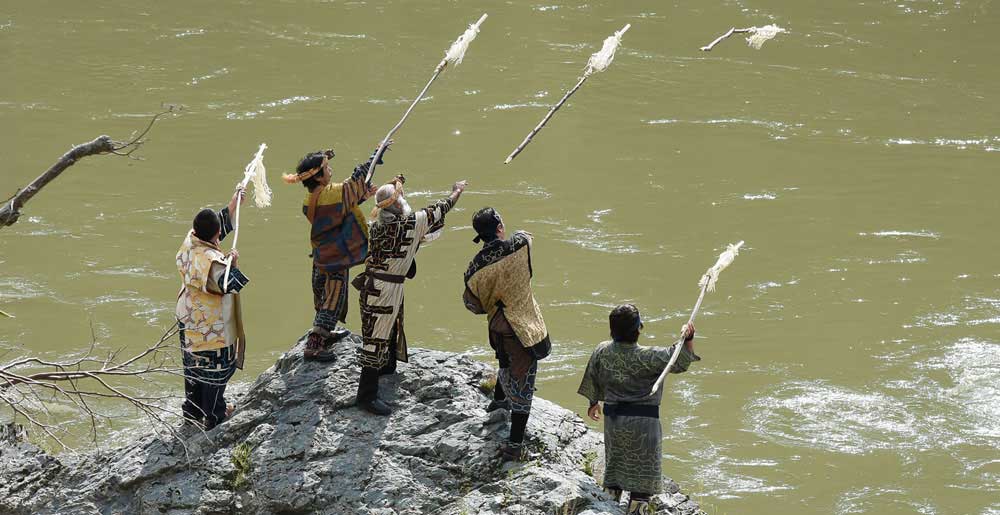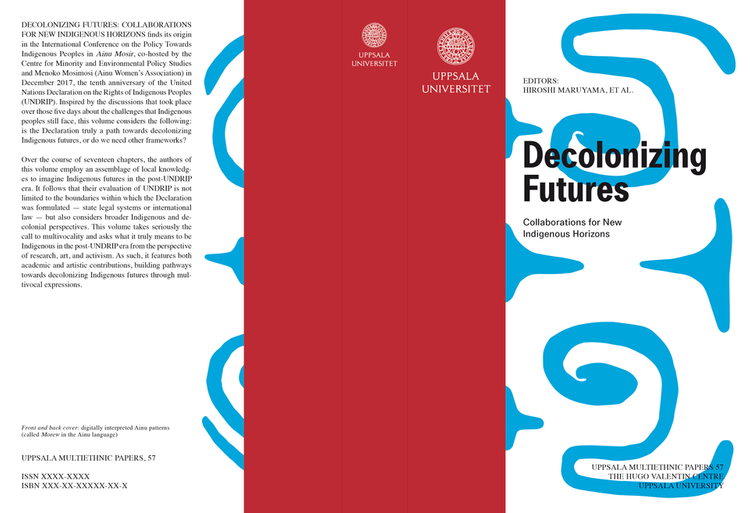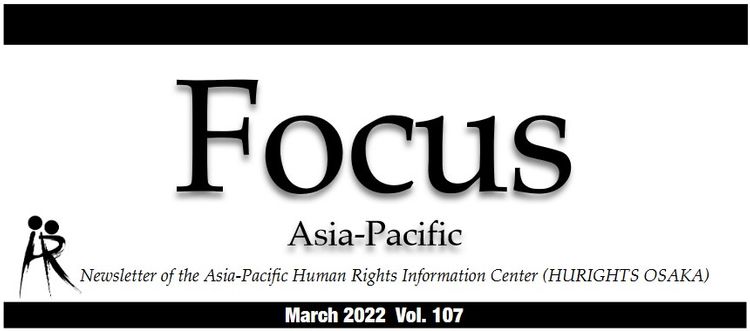A legal opinion on indigenous peoples’ rights and their applicability in Japan’s legal system

Kamrul Hossain, University of Lapland in Finland
(Image Source)
Background
The Centre of Environment and Minority Policy Studies (CEMiPoS) – a Sapporo-based think tank dedicated to defending the rights of indigenous peoples – requested me to provide a legal opinion on the rights of indigenous peoples as they apply to the Ainu people, to which Japan is under obligation to uphold within the framework of international human rights law. The request was made in response to a recent conflict over fishing rights, between the Ainu leader Mr. Satoshi Hatakeyama and the official authority in Hokkaido responsible for implementing fresh water fishing regulations. As such, my legal opinion will reflect this particular incident.
The conflict between Mr. Hatakeyama and the authorities
Mr. Satoshi Hatakeyama, an Ainu elder and leader of the Monbetsu Ainu Association, while fishing salmon in the Mobetsu river was denounced by the local official authority in Hokkaido, who claimed that fishing salmon in the river without prior permission is illegal and that Mr. Hatakeyama’s actions violated the rules embodied in the Act on The Protection of Fishery Resources and a prefectural regulation on Inland Waters Fisheries. The latter is referred to as the Hokkaido Regulation, while the former is its basis and restricts salmon fishing in the river for all, including the Ainu. However, the Regulation allows an exception for the Ainu to fish salmon in the river for ritual practices, albeit following certain procedures, such as filing applications to authorities for prior permission. Mr. Hatakeyama has not filed any application for permission in accordance with the aforementioned legislations. He has held the view that the fishing he conducted is his right as an indigenous Ainu, and is justified as part of indigenous peoples’ rights. Given that the Ainu are legally recognized as an indigenous people of Japan, he maintains that, as an Ainu he individually, and his community collectively, enjoy the right to fish in observance of Ainu livelihood and culture. He maintains that the Ainu fished salmon as a part of their traditional livelihood in Hokkaido before they were colonized, and that the Ainu had never abandoned their right. In this particular instance, his act of fishing salmon in the Mobetsu river was for the Ainu ritual called Kamuy-chep-nomi – “welcoming the first salmon” – a ceremonial event that has been observed by the Ainu for centuries. According to him, his actions only corresponds to preserving and maintaining the right to Ainu culture and cultural identity as part of the acknowledged rights belonging to indigenous peoples. Restrictions imposed by Hokkaido Regulation on the exercise of this right are, he claimed, not only inconsistent with international human rights laws applicable to the Ainu as an indigenous people, but also with the Japanese government’s obligation to protect Ainu rights under both local and constitutional law as well as under international law applicable to Japan.
What must we consider?
Based on the facts stated above, we seek the following answers: 1) whether Mr. Hatakeyama’s actions are justified as his right under international human rights law applicable to indigenous peoples; 2) whether the Government of Japan is under a legal obligation to comply with the aforementioned legal framework; 3) whether by restricting Mr. Hatakeyama’s actions in the name of Hokkaido regulation, the authority infringed upon his right to traditional fishing as an Ainu, and that of his community’s right to fish for their livelihood; and finally 4) whether, by his actions, Mr. Hatakeyama has violated the law.
International law applicable to indigenous peoples
Indigenous peoples’ rights are generally presented within the framework of international human rights law. The mainstream human rights instruments – the Universal Declaration of Human Rights (UDHR) and the two Covenants on the Civil and Political Rights (ICCPR) and on the Economic, Social and Cultural Rights (ICESCR) – do not, however, refer to indigenous peoples but ethnic minorities, which nevertheless covers indigenous peoples’ rights as they form ethnic minorities in most countries. Notwithstanding the lack of a clear reference, the provisions of the two Covenants, as subsequently interpreted by treaty monitoring bodies such as the Human Rights Committee (HRC) and the Committee on Economic, Social and Cultural Rights (CESCR), suggest that individuals belonging to an indigenous people, either individually or collectively, and “in community with other members” of their group, are entitled to rights related to the protection, preservation, and the enjoyment of culture. The term “culture” in this context is conceptualized to refer to traditional practices, such as hunting, fishing, land use management, etc.
Indigenous peoples traditionally exercise these practices as their customary right to subsistence. The practice of culture in the form of exercising subsistence rights is consistent with norms embodied in international human rights law. For example, the provision of the common Article 1(2) of the two Covenants articulates that “… in no case may a people be deprived of its own means of subsistence.” Depending on the consideration of whether people’s right is equal to that of an indigenous people’s right, scholars argue that the enjoyment of culture (e.g., under Article 27 of the ICCPR) has a collective dimension, and that an individual can only meaningfully enjoy the right in a collective setting. Exercising subsistence rights as part of cultural rights therefore requires a collective element, and a right to exercise self-determination, a right that “all peoples,” by virtue of common Article 1(1) of the two Covenants, may “…freely pursue their economic, social and cultural development.” An indigenous people arguably qualifies as a “people,” rather than as simply a “minority” under Article 27 of the ICCPR (see Article 108 of the Constitution of Norway recognising the Sami as a “people”). Today, exercising the right to self-determination includes procedural mechanisms, such as the involvement of indigenous peoples in decision-making. Such involvement takes form of their participation, consultation, and free consent, which in other words refer to the “free, prior and informed consent” in matters that affect indigenous peoples. The opinions expressed by the HRC and the CESCR are considered as authoritative statements that give clearer meaning of the specific provisions of the Covenants. Reference to indigenous peoples’ right to maintain, and participate in, traditional culture and cultural life is found, e.g., in General Comment 23 (1994) on Article 27 of the ICCPR and in General Comment 21 (2009) on Article 15(1) (a) of the ICESCR. In addition, the Optional Protocol attached to both Covenants allows an aggrieved individual to refer any violation of their rights by the state to the HRC and/or to the CESCR, once all remedies at the national level are exhausted. In a number of such Communications, as they are known, the HRC has endorsed the view that traditional practices (i.e., fishing, hunting, trapping) held by the indigenous peoples form a part of their culture corresponding to their right to subsistence, as well as their right to cultural identity. Even though the Optional Protocol only allows individuals (and not the whole group) to bring a Communication for the violation of their rights, the HRC has stated that a group of individuals, when commonly affected, is not debarred from submitting a complaint for any alleged breaches under Article 27 (Apirana Mahuika case, 1993). Moreover, the jurisprudence of the HRC also suggests a requirement for receiving the free, prior and informed consent of the members of the indigenous community (Ángela Poma Poma vs. Peru, 2009) in matters that affect them, a sort of procedural practice to exercise the right to self-determination.
In a similar vein, the International Convention on the Elimination of All Forms of Racial Discrimination (ICERD) applies to indigenous peoples, as presented in the General Recommendation No. 23 (1997) endorsed by the Committee of the ICERD (CERD). The Committee clearly articulated that indigenous peoples are entitled to exercise their rights concerning the practice and revitalization of their cultural traditions and customs, and that their consent is required in any decision-making process related to their rights and interests. The Committee suggested that indigenous peoples should be restituted for the historic injustices that they suffered. Such restitutions can be made by way of compensating them and ensuring that their rights over traditional lands and resources, including indigenous peoples’ fishing rights, are protected.
Indigenous peoples’ rights are also embodied in a number of other instruments. The International Labour Organization Convention No. 169 (ILO-169) is the only legally binding instrument that covers the collective component of indigenous peoples’ rights in relation to the traditional lands that they own, occupy or otherwise use. The most ground-breaking development is the adoption of the United Nation Declaration on the Rights of Indigenous Peoples (UNDRIP) of 2007, endorsed by almost all the states of the world. The UNDRIP ensures the comprehensive collective rights attached to indigenous peoples. In addition to the right to self-determination in the form of autonomy or self-government in matters concerning their internal and local affairs (Articles 3 and 4), the Declaration clearly articulated provisions concerning the implementation of free, prior and informed consent of indigenous peoples in all matters affecting their lands, traditional territories, and other resources (Article 32.2). The right to carry out subsistence activities (Article 20) and the right to water resources (Article 25) are important to highlight herein for the purpose of obtaining a free, prior and informed consent.
Japan and its international legal obligation in relation to indigenous peoples’ rights
Japan is a party to all the international regulations referred to above except for the ILO Convention No. 169. While the ICCPR, ICESCR, ICERD are legally binding instruments that directly apply to Japan, the UDHR and the UNDRIP are not legally binding. Nevertheless, the latter offer normative significance, and at times they are referred to in binding judicial procedures making their provisions work in national and international legal systems. For example, in Saramaka People v. Suriname, the Inter-American Court of Human Rights – a judicial body – referred to Article 32 of the UNDRIP to give effect to the principle of free, prior and informed consent. As such, the UNDRIP, even if it is not a legally binding instrument, clearly offers moral obligation, which applies to Japan too. Overall, the international human rights law is consistent concerning the rights of indigenous peoples, and for Japan, it forms a part of international legal obligation because of its endorsement of the instruments described.
How such an obligation forms a part of Japanese national regulation must be explored. The Constitution of Japan – the supreme law of the nation – refers to its international legal obligation. Article 98 (paragraph 2) of the Constitution clearly provides the assurance to faithfully observe international treaties to which Japan is a party. Paragraph 1 of Article 98 also mentions that no regulations, when in conflict with constitutional obligations, will have legal force or validity. As such, the Ainu, as an indigenous people of Japan, are legally entitled to, both individually and collectively, the rights enumerated in international human right laws applicable to indigenous peoples. In fact, such an approach has already been taken in the famous 1997 Nibutani Dam case, where the Sapporo District Court ruled that the Ainu people do have the right to enjoy culture under Article 27 of the ICCPR. The Court also referred to Arctic 13 of the Japanese Constitution, which suggests that “All of the people shall be respected as individuals. Their right to life, liberty, and the pursuit of happiness shall, to the extent that it does not interfere with the public welfare, be the supreme consideration in legislation and in other governmental affairs.” The respect for all people as individuals reflects the treatment that differences between individuals with regard to age, sex and ethnic cultural orientation are to be considered. The Article also refers to the “pursuit of happiness” which is rooted in culture and cultural identity held by an ethnic individual. As a result, the Court’s reference to Article 27 of the ICCPR has been to uphold the practice of culture corresponding to “pursuit of happiness,” which eventually contributes to promote the ethnic identity of the Ainu as an indigenous people. In sum therefore, Mr. Hatakeyama’s actions are clearly justified as part of his rights under international human rights law applicable to indigenous peoples to which Japan is under explicit legal obligation by virtue of its constitutional guarantee. However, the effective protection of his right to traditional fishing as an indigenous Ainu under international human rights law requires the adjustment of domestic legislations to reflect international legal obligation as presented in the following section.
Exploring the relevant national regulatory framework to evaluate Mr. Hatakeyama’s actions
To evaluate whether the Hokkaido regulations restricting Mr. Hatakeyama from fishing salmon without prior permission is an infringement of Ainu rights to which Japan has legal obligation, it is important to explore any available national regulatory framework that protects the rights of the Ainu as an indigenous people, and whether such a framework is inconsistent with Japan’s international legal obligation. At the same time, it is also important to explore the Hokkaido Regulation that restricts Mr. Hatakeyama from fishing in Mobetsu River, and whether the restriction imposed by the authority is ultra vires. In other words, whether the authority has exceeded its legal competence while regulating rules restricting Ainu fishing rights.
In April 2019, Japanese government enacted legislation recognizing the Ainu as an indigenous people of Japan, replacing the previous Act. The current legislation entitled: the “Ainu Policy Promotion Act” of 2019, while celebrated as a ground-breaking development, requires careful scrutiny as to what it means for the Ainu. The Act sets a number of provisions pertaining to the promotion and awareness of Ainu culture, and to the creation of comprehensive policies for regional development, industry, and tourism in areas with Ainu populations. While the Act recognizes the Ainu as an indigenous people of Japan and acknowledges the importance of Ainu culture, including rituals and practices in connection to, for example, fishing salmon in rivers using traditional methods (Article 17), it clearly falls short of offering substantive rights for the Ainu as an indigenous people according to the international legal standard, as referred to earlier. Nor does the Act refer to a right to self-determination and/or any concrete procedures for the effective implementation of Ainu rights that correspond to the international legal standard, such as procedures for exercising control over natural resources through free, prior and informed consent. The lack of ratification of Optional Protocols within the Covenants – the ICCPR and ICESCR – makes it challenging for the Ainu to bring complaints against the Japanese government for any alleged violation. As a result, it can be concluded that although the Act has taken a step towards recognizing the Ainu as an indigenous people, and their traditions as an important part of their identity, there is a need to integrate international human rights law with the meaningful protection of Ainu rights, to which Japan is under a clear legal obligation.
The next issue – whether Mr. Hatakeyama’s actions violated the law – requires analysing the legislations through which he has been banned for fishing. The legislations referred to are the Act of the Protection of Fishery Resources, originally adopted in 1951 (and last amended in 2004), and the Hokkaido Inland Water Fisheries Adjustment Regulation of 1964 (Hokkaido Regulation). The latter was enacted by the Hokkaido Prefectural government in order to give effect to the former in local settings. The Act states that the Ministry of Agriculture, Forestry and Fisheries and prefectural governors can restrict or prohibit the capture of marine species, the sale or possession of marine species, fishing gear and fishing vessels, the abandonment or leakage of agents injurious to marine species and otherwise causing water degradation, the capture or removal of substances required for the capture of marine species, and the transplanting of marine species, as well as specific fishing methods (Articles 4 and 5 of the Act of the Protection of Fisheries Resources). It is therefore clear that the Hokkaido prefectural governor has the right to create by-laws for the purpose of sustainable utilization of marine resources. The Hokkaido Regulation is such a by-law, which restricts all non-commercial fishing in rivers, including subsistence fishing by the Ainu. However, the Hokkaido Regulation places an exception for Ainu salmon fishing for ritual purposes only, albeit with prior permission. According to Article 4 of the Hokkaido Regulation, the governor’s permission is required to take fish through certain means, which includes the above exception applicable to the Ainu. The regulation is enacted under the authority granted to Prefectural Governments by the provision of Article 94 of the Constitution of Japan, which states: “Local public entities shall have the right to manage their property, affairs and administration and to enact their own regulations within law.”
Article 92 of the Constitution suggests that regulations concerning the organization and operation of local public entities shall be fixed by law in accordance with the principle of local autonomy. Hokkaido is one of the prefectures recognized as local public entity in accordance with Article 3(1) of the Local Self-Governmental Act of Japan, and thereby enjoys local autonomy. Consequently, by virtue of Article 94 of the Constitution of Japan, as a local public entity the Hokkaido Prefectural Government enjoys a right to manage its property, affairs, and administration and to enact its own regulations within law. The Hokkaido Regulation concerning the restriction on non-commercial fishing is a by-law enacted by the Hokkaido Prefectural Government in accordance with Article 94 of the Constitution.
The question at present lies in whether the constitutional safeguard for defending Hokkaido Regulation demonstrates sufficient evidence to justify the Ainu right to traditional fishing, including fishing for ritual purposes without permission. There are a number of reasons why the Hokkaido Regulation can be considered ultra vires or beyond the legal competence of the local authority (Hokkaido Prefectural Government). These reasons are as follows:
- The Hokkaido Regulation fails to distinguish between non-commercial fishing and fishing by the Ainu as an indigenous people who have the right to subsistence and the right to observe traditional customs as part of their culture and cultural identity. Due to this lack of recognition of the differences, the Hokkaido Regulation, as it relates to Ainu right to fishing, is unjustified.
- The Hokkaido Regulation contradicts Japan’s international legal commitment to the protection of the rights of Ainu as an indigenous people in accordance with Article 98 of the Constitution of Japan.
- The Hokkaido Regulation fails to recognize the constitutional aspiration of respecting all individuals regardless of differentiation, particularly on the basis of ethnic cultural orientation, which is a clear violation of Article 13 of the Constitution of Japan.
- The Hokkaido Regulation runs counter to Japan’s recently adopted legislation – the “Ainu Policy Promotion Act” of 2019 – which legally recognizes the Ainu as an indigenous people of Japan and highlights their traditional lifestyle, rituals, and practices.
- The Hokkaido Regulation is obsolete, as it predates the existing developments in terms of legal protection, and the legal obligation of Japanese Government, concerning the rights of the Ainu as an indigenous people.
- The Hokkaido Regulation, in its adoption process, never considered the Ainu’s right to subsistence fishing or Ainu culture, nor reflected the voices from the Ainu, even after the Ainu were recognized as an indigenous people. The Ainu never abandoned their traditional rights, which they have practiced throughout generations. Therefore, the Regulation itself is flawed to the extent that it fails to incorporate the traditional fishing rights of the Ainu as an indigenous people.
- The Hokkaido Regulation is also in conflict with Japan’s domestic judicial practices as articulated in the Kayano v. Hokkaido Tochi-Syuyou-Iinkai (Hokkaido Land Expropriation Committee) case, where the Sapporo District Court clearly referred to international human rights law applicable to the Ainu as an indigenous people to which Japan has legal commitment.
- The Hokkaido Regulation, by not integrating the substantial regulatory obligations placed upon the Japanese government concerning the rights applicable to the Ainu as an indigenous people, is clearly contrary to national and international law, and thus ceases to have a legal force.
Conclusion
Salmon fishing rituals are a tradition in Ainu culture, and fully recognized as a right under international human rights law. The Japanese government has clear obligation to protect and promote this right as part of its international legal obligation. In order to meaningfully implement this right, Japanese government is obligated to develop procedures in consultation with the Ainu and with their informed consent so that they may exercise their rights as indigenous peoples. Such procedures include adopting measures that facilitate the Ainu as they build their own institutions through which they are able to exercise their right to self-determination, and are able to maintain fishing as a collective Ainu right to subsistence in accordance with the international human rights standard.
The Hokkaido regulation requiring that Ainu seek permission to fish salmon for their rituals is contrary to the international human rights standard, and is therefore inconsistent with international human rights law applicable to the Ainu. Mr. Hatakeyma has every reason to uphold his right to traditional fishing as an Ainu, given both international human rights laws as well as customary norms and practices held by the Ainu as an indigenous people. Mr. Hatakeyama’s actions are fully consistent with customary law applicable to the Ainu, and is also completely justifiable, not only under international human rights law endorsed by Japan, but also under national legislations, given that the Hokkaido Regulation is unjustified, contradictory and inconsistent with the national and international regulatory frameworks applicable to Japan. Hence, Hokkaido Regulation is ultra vires. The application for permission to fish for ritual purposes not only goes against norms corresponding to the customary rights held by the Ainu as an indigenous people, but also against their worldview, and is hence a disgrace against their rights traditionally rooted in their communities. Such a requirement imposed on Ainu traditional fishing as well as on Mr. Hatakeyama is contrary to existing Japanese regulatory framework applicable to indigenous peoples. Therefore, the outdated Hokkaido Regulation does not have legal force in the context of the actions performed by Mr. Hatakeyama.




